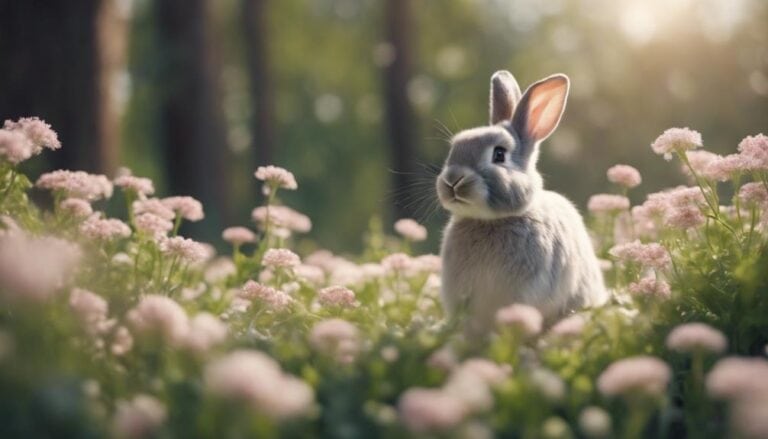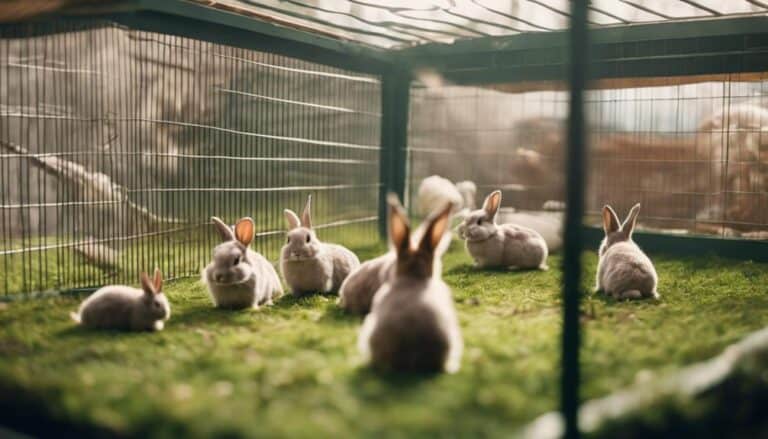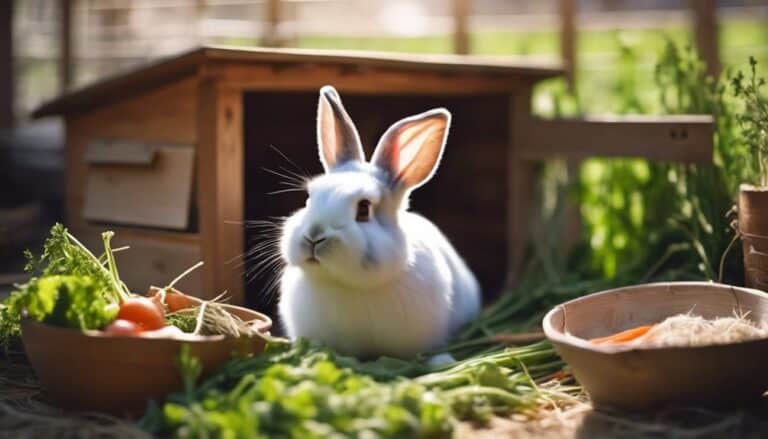Selecting the right breeding pair is like a puzzle piece that can determine the future genetic health of a population. The intricate dance of genetics and compatibility plays an important role in shaping the sustainability and resilience of species.
But why is this selection process so essential? Stay tuned to uncover the intricate web of factors that hinge on this careful decision-making process, influencing not just one generation but the genetic legacy of many to come.
Contents
Key Takeaways
- Selecting the right breeding pair ensures genetic diversity and minimizes inbreeding risks.
- Effective pair selection supports conservation efforts and population health.
- Computer simulations aid in refining selection strategies for optimal genetic health.
- Prioritize low average kinship pairs for long-term population viability and resilience.
Genetic Diversity Maximization

To maximize genetic diversity in managed populations, selecting the right breeding pair is a critical step in preventing inbreeding and ensuring the health of future generations. Genetic diversity is essential for the long-term viability of species and populations.
Breeding pair selection methods such as Ranked MK Selection and Dynamic MK Selection are instrumental in minimizing average kinship, hence reducing the risks associated with inbreeding. These strategies play a crucial role in maintaining best genetic diversity within managed populations.
Computer simulations are valuable tools used to evaluate the effectiveness of different breeding pair selection techniques in achieving best genetic diversity. By running simulations, researchers can assess the outcomes of various scenarios and refine their strategies to enhance genetic diversity retention. Through these simulations, experts can identify the most suitable breeding pairs that will contribute significantly to the overall genetic health of the population.
Kinship Minimization Techniques
Selecting appropriate kinship minimization techniques is pivotal for maintaining genetic diversity in managed populations. When choosing the right methods for breeding pair selection, consider the following:
- Static MK Selection and Dynamic MK Selection: These techniques are pivotal for managing genetic diversity effectively.
- Ranked MK Selection and Simultaneous MK Selection: pivotal strategies for selecting breeding pairs with low average kinship.
- Population Characteristics: Methods like Simultaneous and Ranked MK Selection are suitable for discrete generation populations, while Dynamic MK Selection is robust for those with overlapping generations.
- Testing and Comparison: Computer simulations play a pivotal role in testing and comparing the effectiveness of various kinship minimization techniques in breeding pair selection.
Effective Breeding Pair Selection

Effective genetic diversity management hinges on precise selection of breeding pairs that exhibit low average kinship levels to guarantee long-term population viability. When choosing breeding pairs, it's vital to prioritize genetic diversity to prevent inbreeding depression and maintain a healthy population. By selecting individuals with low average kinship, you can maximize genetic diversity within the population.
Utilizing advanced selection methods and tools like computer simulations can aid in identifying the most suitable breeding pairs that contribute positively to genetic diversity retention. These methods allow for the evaluation of different breeding pair scenarios, helping you make informed decisions that benefit the overall genetic health of managed populations.
Ensuring that breeding pairs have minimal average kinship levels is essential for the long-term success and sustainability of breeding programs. By focusing on effective breeding pair selection strategies, you can actively contribute to the preservation of genetic diversity and the promotion of healthy population dynamics.
Importance of Genetic Variation
Genetic variation plays a pivotal role in sustaining population health and adaptability, particularly within captive breeding programs. When selecting breeding pairs, consider the following:
- Preventing Inbreeding: Maintaining genetic diversity through thoughtful breeding pair selection helps prevent inbreeding, which can lead to decreased fitness and reproductive success.
- Preserving Unique Traits: By selecting breeding pairs with low average kinship, you can promote genetic health and preserve unique traits within the population, contributing to overall diversity.
- Enhancing Resilience: Genetic variation enhances the resilience of populations to environmental changes and disease outbreaks. This diversity provides a buffer against unforeseen challenges that may arise.
- Supporting Conservation Efforts: Effective breeding pair selection strategies are essential for the long-term sustainability and success of conservation efforts. By prioritizing genetic diversity, you can contribute to the overall health and viability of the population you're working to conserve.
Impact of Breeding Pair Selection

The impact of careful breeding pair selection on gene diversity and inbreeding levels within managed populations is profound. By strategically choosing breeding pairs with low average kinship, genetic health can be maintained through the promotion of diverse genetic backgrounds. Identifying genetically underrepresented individuals is essential in breeding pair selection to introduce new genetic material and prevent inbreeding depression.
Additionally, balancing genetic diversity retention and inbreeding control is essential for the long-term success of captive breeding programs. Effective breeding pair selection methods aim to maximize genetic diversity while minimizing the risks associated with inbreeding. Maintaining genetic diversity within managed populations is key to ensuring their resilience to environmental changes and diseases.
Frequently Asked Questions
What Are the Criteria for Selection of Breeding?
When selecting breeding pairs, prioritize genetic diversity through health screening, temperament evaluation, and conformation standards. Consider performance testing, reproductive fitness, pedigree analysis, and breeding goals to guarantee pairings for healthier offspring and population sustainability.
What Is the Meaning of Breeding Pair?
Selecting the right breeding pair is akin to finding a genetic puzzle match. Genetic compatibility guarantees healthy offspring with diverse traits. Pairing based on genetic traits and compatibility is vital for reproductive success, offspring quality, and achieving breeding goals.
What Is the Meaning of Breeding Couple?
In breeding, a couple refers to two animals selected for mating based on genetic compatibility, reproductive success, complementary traits, breeding goals, genetic diversity, health considerations, pedigree analysis, and behavioral compatibility. These factors influence successful breeding outcomes.
What Is Phenotypic Selection in Animal Breeding?
In animal breeding, phenotypic selection examines observable traits' impact on reproductive success. It guides breeders in prioritizing traits for genetic improvement. Understanding phenotypic selection aids in enhancing genetic diversity, avoiding inbreeding, and evaluating breeding value for better outcomes.
Conclusion
To wrap up, selecting the right breeding pair is essential for maximizing genetic diversity and minimizing inbreeding in populations. Remember: 'Variety is the spice of life.'
By carefully choosing breeding pairs based on kinship minimization techniques, breeding programs can secure the long-term sustainability and health of the population. Make informed decisions to preserve gene diversity and promote a thriving population.






